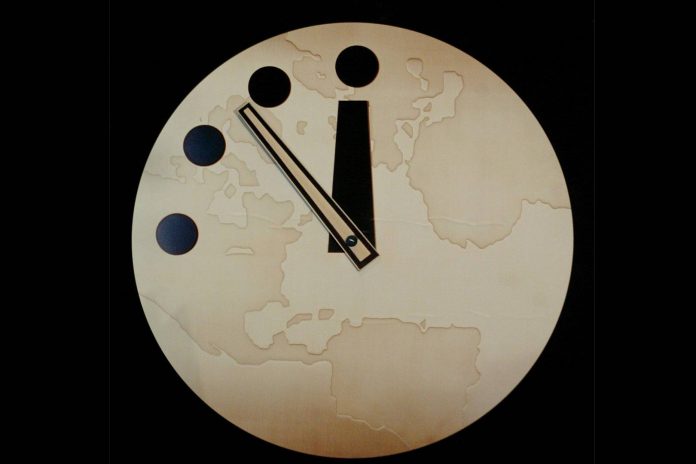In another stellar win for the Trump administration, today the Bulletin of the Atomic Scientists pushed the Doomsday Clock forward to 2 minutes from midnight. The last time the Bulletin got this grim was in 1953, after the US and USSR tested their first hydrogen bombs.
What’s the Doomsday Clock?
Since it began in 1947, the Doomsday Clock has become the best-known measure of humanity’s risk of global catastrophe. Until 2007, it only tracked the danger of nuclear weapons; since then it’s also incorporated the effects of climate change.
Who sets the clock?
The nineteen members of the Bulletin’s Science and Security Board, including national security experts, physicists, climate scientists, a public health expert and a cybersecurity expert; and the Board of Sponsors, including 15 Nobel laureates. Each year the Bulletin decides whether to move the clock or leave it as-is. (Until 1973, the Bulletin’s editor set the clock.)
How has the setting changed over time?
The clock was set at 7 minutes to midnight in 1947, kind of accidentally—it was originally just a cover design for the Bulletin, and artist Martyl Langsdorf said this setting “looked good to my eye.”
In 1949, when the USSR tested its first atomic bomb, Rabinowitch moved the hand to 3 minutes to midnight. Since then the Bulletin has changed the setting 22 times. The high mark was 17 to midnight, set in 1991 after the US and Russia signed the Strategic Arms Reduction Treaty. The low mark is 2 to midnight, reached in 1953 and again today.
Why did it change this time?
In today’s announcement, the Bulletin blamed rising tensions between the US and Russia, the US and North Korea, and the US and China.
It’s not entirely our fault; the announcement also mentions the continuing arms race between India and Pakistan, and Iran’s quest for nuclear capability.
The announcement also discusses the persistent threat of climate change and even references fake news and election tampering, as they degrade the public’s ability to push for sane nuclear and climate policy.




























